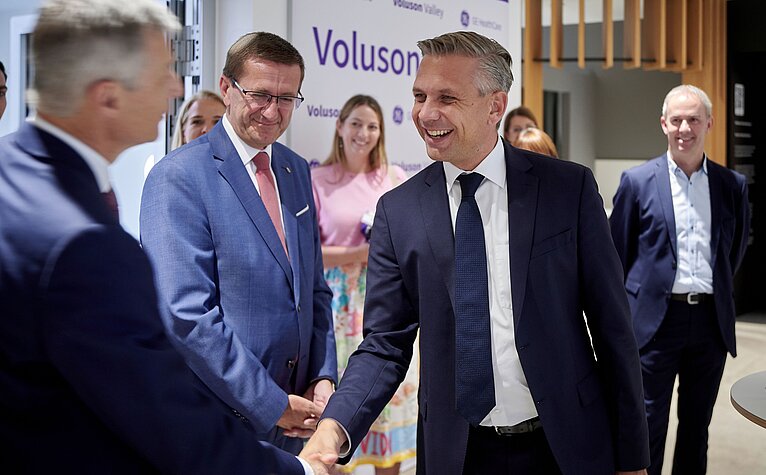 BMWET/Enzo Holey
BMWET/Enzo Holey
- Location advantages
- Life Sciences
- Success story
- Research & development
- News
Where high tech meets heartbeat - Why Zipf is the bright future of medical technology
22. August 2025What began with an unconventional idea and a pioneer who traded brewing for sound waves has evolved into a global hub for women-focused ultrasound and environmentally responsible medical technology.
The story of Zipf reads like a modern legend. A visionary turned away from the family brewing business, swapped malt for metal, and founded a company that initially dealt with potato baskets—and soon after, with sound waves that penetrate the human body. Ultrasound, inspired by World War II submarine technology, became the foundation of improved preventive medicine.
What started in the 1960s with shaky lines flickering on a screen soon transformed into clear, real-time images of unborn life, thanks to Austrian engineering. The “Combison 100” set new standards, and the world’s first 3D ultrasound imaging system, the “Combison 330,” was also developed in Zipf. Suddenly, parents could see their children months before birth. Today, the technology goes even further: with 3D-printed models, blind parents can feel their baby, and surgeons can operate on tiny hearts—a quantum leap in prenatal care.
Climate Protection Meets Economic Excellence
Zipf is now synonymous not only with technical innovation and entrepreneurial spirit but also with ecological leadership. In May 2025, the GE HealthCare site in Zipf was officially recognized as the company’s first zero-emission facility in Europe. This achievement saves approximately 280 tons of CO₂ annually—without compromising production or research.
Heat pumps, photovoltaic systems, 100% green electricity, and e-mobility infrastructure: over 15 years, a traditional production site was transformed into a beacon of sustainable industry. “Becoming a zero-emission site was a joint effort—driven by strong team spirit, clear goals, and the conviction that sustainability and excellence can go hand in hand without sacrificing quality, efficiency, or innovation,” emphasizes Günther Hüll, Plant Manager in Zipf.
Austria as a Future-Focused Location - Locally Rooted, Globally Demanded
Zipf is more than a production site; it’s a center for research, invention, and design. Around the world, gynecologists and obstetricians use devices developed in Upper Austria. Premium ultrasound systems with 4D imaging, portable diagnostic tools, and AI-supported applications originate from “Voluson Valley,” a nickname for the region inspired by the globally renowned Voluson product family.
In 2024, GE HealthCare invested approximately one billion US dollars in global research and development—significantly benefiting the Zipf site. With over 40 new innovations last year alone, many from Zipf, the company is now a key driver of medical progress. This success is supported by a strong network: GE HealthCare collaborates in Austria with the Austrian Research Promotion Agency (FFG), the Fraunhofer Society, the University of Vienna, MedUni Vienna, the Visual Computing Center VrVis, and the Christian Doppler Research Association. Additional partnerships with Silicon Austria Labs (SAL), the Radon Institute for Applied Mathematics (RICAM), and the Upper Austrian innovation center Edison highlight the region’s focus on AI in medical diagnostics. As sponsor of the Edison MedTech Award, GE HealthCare also actively supports young innovators in Upper Austria.
If Zipf proves anything, it’s this: major innovations don’t always come from metropolises or Silicon Valleys. Austria is a global leader in sustainable medical technology—and Zipf is its finest example.


